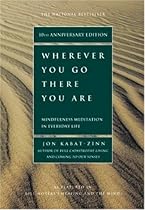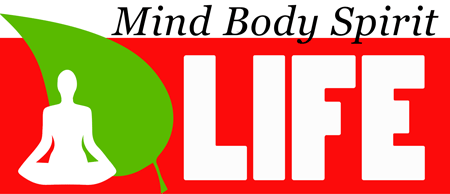How Mindfulness Practice Promotes Wellness at the Dinner Table

Eat less, enjoy it more, and increase wellness using mindfulness practice at every meal.
 One of the most powerful wellness promotion practices is the use of mindfulness in as many ways as we can. Many of you may have heard of mindfulness based stress reduction (MBSR). MBSR was developed by Jon Kabat-Zinn, who has been a practitioner of Buddhist meditation for many years. If you are unfamiliar with Kabat-Zinn, I would recommend his book, Wherever you go, there you are: mindfulness meditation in everyday life (1994). Though mindfulness is associated with various Buddhist traditions, the way that Kabat-Zinn has formulated the practice brings it to our culture with a method that is accessible to all, regardless of philosophical or religious orientation.
One of the most powerful wellness promotion practices is the use of mindfulness in as many ways as we can. Many of you may have heard of mindfulness based stress reduction (MBSR). MBSR was developed by Jon Kabat-Zinn, who has been a practitioner of Buddhist meditation for many years. If you are unfamiliar with Kabat-Zinn, I would recommend his book, Wherever you go, there you are: mindfulness meditation in everyday life (1994). Though mindfulness is associated with various Buddhist traditions, the way that Kabat-Zinn has formulated the practice brings it to our culture with a method that is accessible to all, regardless of philosophical or religious orientation.
How does mindfulness practice promote wellness at the dinner table?
Think about how most of us approach food in our contemporary culture of consumption. Often the experience is based on quantity versus quality. Larger portions give us the impression that we are receiving more “value”. The more salty and sweet, and even spicy, the more we are sure we are being “satisfied”. The recent trend in “small” plates, with the incongruous increase in price per serving, is an interesting concept. Fine dining is available to a small percentage of our population, and the idea of eating a smaller serving and enjoying it more because it is made from higher quality materials, and put together by highly trained professionals, is an example of the confusion we all have with our eating experience and the pervasive social inequality we have come to accept as a way of life.
In either case, if we approach the dinner table with a mentality of “consumption” we are missing the point. Food is nourishment for our entire being. It is not about demonstrating our wealth or our social standing. I know I am stepping on a lot of toes here. When I use the word “nourishment” I am speaking of something that is universal, energetic, and dynamic. We take in what we need to flourish as an organism. The science of nourishment has been prolific in describing all of the details that inform us of what is best to eat and avoid. The problem with “science” is that it is ever changing and depends on funding for research. If only the studies that fit the status quo are funded, how will we ever have science that describes the alternatives that push the envelope? We are often left to our own devices.
Let’s try to strip food of the cultural trappings of consumption, and look at it for what it is. I am a proponent of eating “natural” food. This is not based on the label that you see on a package when you are at the grocery store. As a matter of fact, if the food you are buying is in a package and the list of ingredients is longer than three or four items, you are probably not buying a “natural” food. Whole foods are natural. In other words, if you went out into nature and found the food, what would it look like? Go into the produce section of the grocery store, or a farmer’s market. What do you see? There may be some packaging to hold bundles of fruits and vegetables together, yet the list of ingredients is likely only one item long. A package of tomatoes contains “tomatoes” and nothing more. A package of brown rice contains “brown rice”. And so on.
There are some who promote eating foods that are as minimally processed as possible – “raw”. I eat many raw foods and I also eat many cooked foods. That is my preference and not a recommendation. Each person must find what is best for each person. Use the information that others share as a guideline and then choose what you need and leave the rest. I also cook my own food as much as possible. I do not want to eat food that is cooked in a restaurant very often. I can control what happens to the food I cook, and I can know the attitude and mood of the food preparer. If you don’t understand why this is important, I will explain in a minute. If you are not comfortable with cooking, I would explore that discomfort and seek a way to adjust this. I strongly advocate preparing food at home. This is not only more economical, it is safer in many ways.
Another quick comment: I also advocate eating more vegetarian meals per week than non-vegetarian meals per week. This means that I eat seafood at three or four meals per week. I may eat chicken, pork, and occasionally beef a few times a month depending on the season. The rest of my meals are composed of whole grains, fresh vegetables, fresh fruit, soy products, and small amounts of dairy. I also drink green tea daily and plenty of water. I do drink coffee a couple of times a week; especially when I cook a nice brunch on Sunday morning before I sit down to write these posts. I have not had an alcoholic beverage in over 25 years. This is what works for me. Please find what works for you.
From a holistic perspective, all our experience is formed from the interaction of mind, body, and spirit. Attitude, mood, and a sense of connection with the Universe all influence the immediate experience and the energy that goes into the reality of the moment. If I am in a horrible mood and prepare a meal with that energy, it is not going to have the same nutritional value as if I am in a loving and peaceful mood. Please do not look to science for evidence of this claim, since there has not been a lot of funding for this kind of research over the years. I am speaking from experience and intuition. Sorry for the non-scientific approach. Sometimes this is necessary. Just think of how many of us feel about the memory of grandma’s cooking. The love she put into the meals she prepared for us was always palpable.
If attitude, mood, and a sense of connection all influence the quality of the food that we eat, you can see why it may be less healthy to eat where someone you don’t know and can’t see is preparing your food. This brings us back to how mindfulness plays a role in promoting wellness at the dinner table (or lunch or breakfast). When I sit down to a meal (or stand in the kitchen as the case may be) I can affect the energy of the food that I am eating by my attitude, mood, and sense of connection. So you see that it is not only the food preparation that is important, it is the eating that is also just as important!
Can you see where this is going yet? A mindfulness practice during cooking and eating will offer several benefits. First, the food will be more nutritious on the energetic level. Second, the eating of the food will be more alive and in the present moment. How does this promote wellness? I can eat smaller quantities of nutritious food and receive all that I need. I do not need to “consume” large quantities of food to feel satisfied. The notion that we need to feel stuffed in order to know we have had a good meal does not promote our wellness one bit. Mindful eating is a valuable intervention for all of us who trend to emotional eating. Mindfulness will allow us to see our mood at the moment we are eating and notice if we are eating from a true hunger or if we are eating to satisfy another emotional purpose. We can use this awareness to start adjusting our eating practice toward a more wellness promoting way of eating.
Notice that I am not talking about dieting and weight loss. I am talking about eating healthy and promoting wellness. I think we all will adjust to whatever weight is best as we eat and drink and exercise and sleep and do all the things that promote our wellness. I do not advocate forced weight loss through deprivation. I would rather lose thirty pounds over a two year period through a mindfulness practice versus losing thirty pounds in six months by denying myself nourishing foods. The difference is in eating all the nourishing foods in the reasonable quantities that are best for me. Mindfulness informs me of the foods that are nourishing and the quantities that are reasonable. Realize that this is a little bit of an oversimplification. Mindfulness doesn’t just happen by itself. It is a “practice” and we all need to shift our awareness to the present moment when we practice. Eventually it becomes more of a habit and we will ease into mindfulness as needed. The ideal is to interact from a place of mindfulness in all our affairs. Try to remember that “progress not perfection” is the order of the day.



